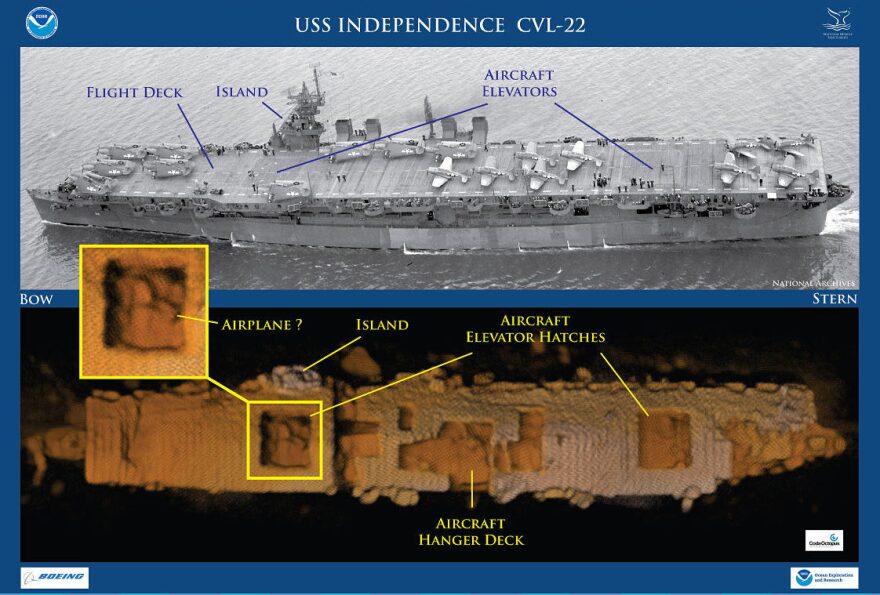It fought in World War II and was used in two atomic bomb tests. Now, 64 years after it was scuttled, the USS Independence has been located by an undersea survey team led by NOAA and the U.S. Navy.
A new image of the ship suggests it's in good shape for a craft that was damaged by shock waves, heat and radiation in the Pacific Ocean.
"Independence sits on the bottom as if ready to launch its planes," said James Delgado, maritime heritage director for NOAA's Office of National Marine Sanctuaries. Noting the ship's war service, he added, "It is a reminder of the industrial might and skill of the "greatest generation' that sent not only this ship, but their loved ones to war."
From San Francisco, NPR's Richard Gonzales reports:
"The National Oceanic and Atmospheric Administration has been on a mission to map an estimated 300 historic shipwrecks lying outside San Francisco's Golden Gate Bridge.
"Using a remotely controlled miniature submarine, scientists captured video images of the USS Independence sitting upright, about 30 miles off the coast.
"The Independence was used as a target ship for two Bikini Atoll atomic bomb tests in 1946. It was then moored in San Francisco as the Navy used it to study nuclear decontamination. But by 1951, the Navy scuttled it off the coast and kept the site secret. Scientists say because of the location the contamination poses no threat."
The Independence sits in water that's roughly a half-mile deep, off of California's Farallon Islands. NOAA says the carrier was part of a fleet of more than 90 ships that made up a "target fleet" for the atomic bomb tests.
The scuttled carrier is not to be confused with other warships that have carried the USS Independence name. A long-serving carrier was retired in 1998; the newest version is an angular, low-profile ship made of aluminum that the Navy calls a "littoral combat ship."
The Navy says the "littoral combat" designation is used for "a fast, agile, networked surface combatant designed to operate in the near-shore environment, while capable of open-ocean tasking, and win against 21st-century coastal threats such as submarines, mines, and swarming small craft."
Copyright 2021 NPR. To see more, visit https://www.npr.org.





